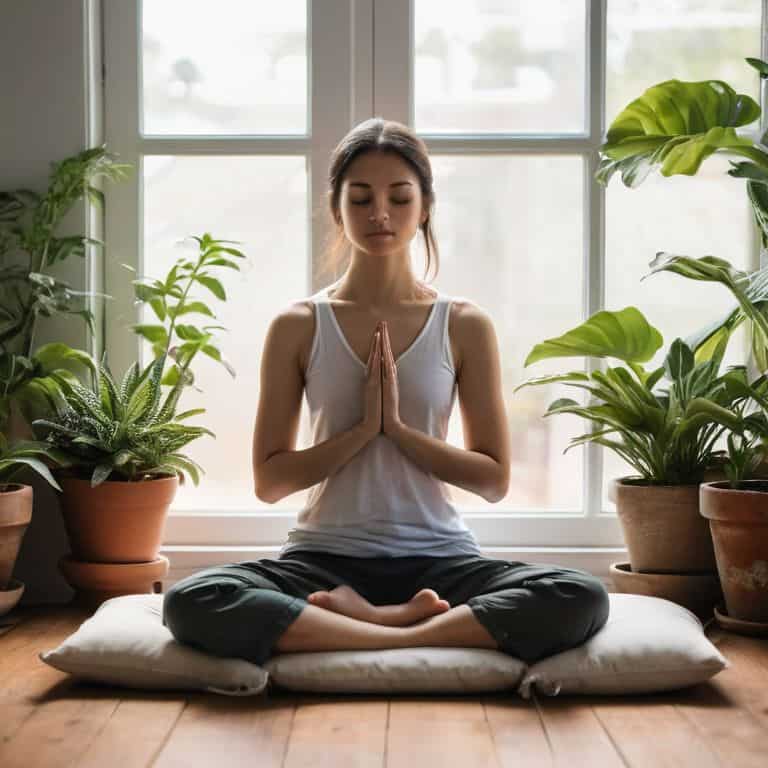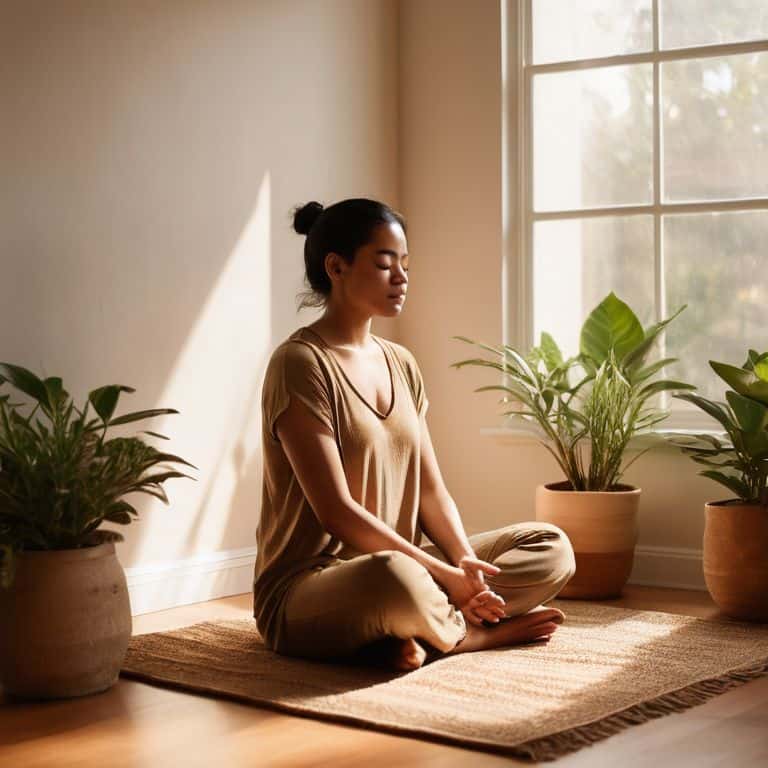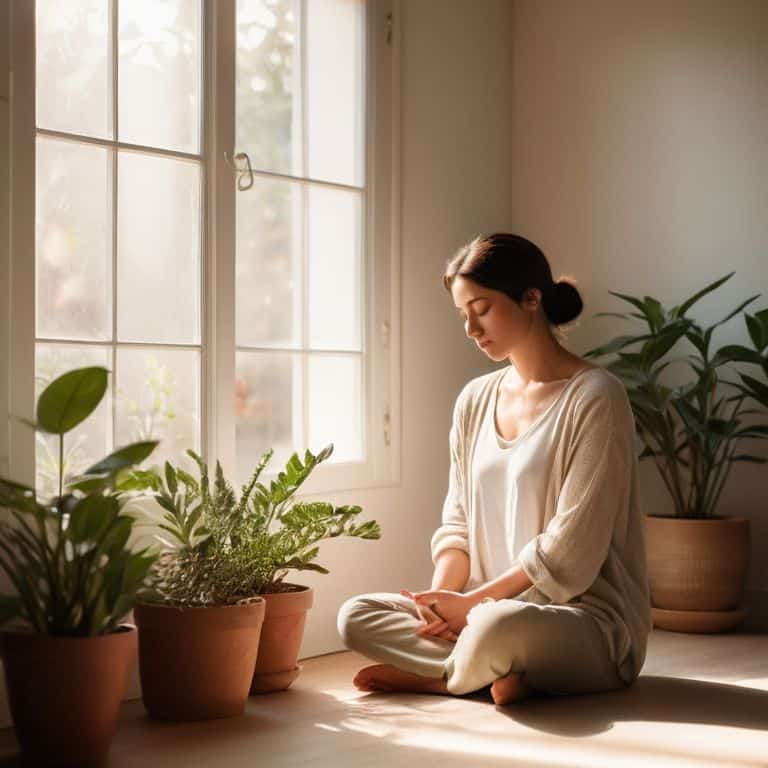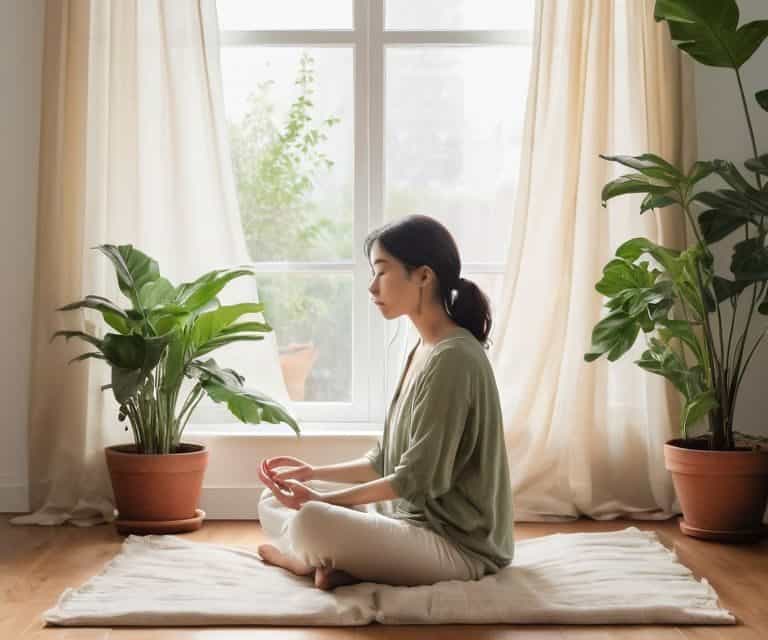I still remember the day I realized that simple meditation techniques for beginners didn’t have to be some esoteric, unreachable goal. As someone who’s been in the trenches of burnout, I thought meditation was just another item on my never-ending to-do list. But the truth is, it’s often the simplest practices that can be the most profound. I’ve seen it in my own life and in the lives of my clients – a few minutes of mindful breathing can be the difference between feeling overwhelmed and feeling grounded.
In this article, I’ll share my favorite no-nonsense tips for getting started with meditation, even if you’re a complete beginner. You’ll learn how to create a consistent practice that actually sticks, and how to quiet that inner critic that’s always telling you you’re not doing it “right.” My goal is to give you the tools and confidence to make meditation a sustainable part of your daily routine, not just another stressful obligation. By the end of this guide, you’ll have a clear understanding of how to use simple meditation techniques to reduce stress and increase your overall sense of well-being.
Table of Contents
Guide Overview: What You'll Need

Total Time: 10 – 30 minutes
Estimated Cost: $0 – $10
Difficulty Level: Easy
Tools Required
- Comfortable cushion or chair for sitting
Supplies & Materials
- Guided meditation app or video optional
- Calming essential oil optional, e.g., lavender
Step-by-Step Instructions
- 1. First, let’s start by creating a peaceful environment that fosters meditation. Find a quiet spot where you can sit comfortably without distractions, and consider using a meditation cushion or a chair with back support to maintain good posture. Take a few minutes to tidy up the space, light some calming essential oils, or play soothing music in the background to set the mood.
- 2. Next, set your intention to meditate by committing to a regular practice. Start small, aiming for 5-10 minute sessions, and gradually increase the duration as you become more comfortable with the practice. Write down your goals and schedule them in your calendar, just as you would any other important appointment, to ensure you prioritize self-care.
- 3. Now, let’s focus on your breathing technique. Close your eyes and take a deep breath in through your nose, filling your lungs completely, and then exhale slowly through your mouth. Repeat this process several times, feeling the air move in and out of your body, and allow yourself to relax and let go of any tension.
- 4. As you continue to breathe deeply, bring your attention to your body posture. Feel the weight of your seat on the ground, the sensation of your feet touching the floor, and the alignment of your spine. Make any necessary adjustments to get comfortable, and remember that it’s okay to shift positions if you need to – the goal is to be kind to your body.
- 5. The next step is to focus on a mantra or a simple phrase that helps you stay present. Choose a word or a short sentence that resonates with you, such as “I am calm” or “I am enough,” and repeat it silently to yourself as you inhale and exhale. When your mind wanders (and it probably will!), gently acknowledge the thought and gently bring your attention back to your mantra.
- 6. As you meditate, notice your thoughts without judgment. Observe them as passing clouds, allowing them to drift by without getting caught up in their stories. Remember that the goal of meditation isn’t to stop your thoughts completely, but to cultivate awareness and learn to navigate your inner world with more ease.
- 7. Finally, when you’re ready to end your meditation session, take a few deep breaths and slowly open your eyes. Take a moment to notice how you feel before getting up and going about your day. Consider journaling your insights or reflecting on any observations you made during your practice to help integrate the benefits of meditation into your daily life.
Simple Meditation Techniques for Beginners

As you embark on your meditation journey, it’s essential to remember that consistency is key. Starting small and making meditation a part of your daily meditation routine for beginners can have a profound impact on your overall well-being. I recommend beginning with just 5-10 minutes a day and gradually increasing the duration as you become more comfortable with the practice.
To enhance your meditation experience, consider exploring mindfulness for stress relief techniques. These methods can help you cultivate a sense of awareness and calm, allowing you to better navigate life’s challenges. You can also utilize beginner friendly meditation apps to guide you through your practice and provide a sense of structure.
Incorporating meditation music for focus can also be beneficial, as it can help you quiet your mind and settle into a meditative state. Additionally, practicing simple yoga for meditation can prepare your body and mind for a deeper, more meaningful meditation experience. By combining these elements, you can create a holistic practice that supports your mental and emotional health, and helps you manage meditation for anxiety and depression.
Daily Meditation Routines for Anxiety Free Living
To incorporate meditation into your daily routine, start small. Begin with 5-10 minute sessions, focusing on deep breaths and gentle stretches. As you progress, you can gradually increase the duration. I recommend scheduling meditation into your daily calendar, just as you would any other non-negotiable appointment. Color-code it, if that helps! By committing to a regular meditation practice, you’ll begin to notice a significant reduction in anxiety and an improvement in your overall sense of well-being. Consistency is key, so try to meditate at the same time each day, whether that’s first thing in the morning or right before bed.
Mindfulness for Stress Relief Made Easy
To make mindfulness a part of your daily routine, start small. Begin with just 5-10 minutes a day, focusing on your breath or a simple mantra. I like to use a guided meditation app to get started, and then gradually move to independent practice. Remember, the goal isn’t to achieve a completely quiet mind, but to learn to gently acknowledge and release distracting thoughts.
As you practice, be kind to yourself – it’s okay if your mind wanders. Simply acknowledge the thought and refocus on your breath. With regular practice, you’ll find that mindfulness becomes a powerful tool for stress relief, helping you stay calm and centered even in chaotic situations.
5 Essential Tips to Get You Started with Simple Meditation Techniques
- Start small and be consistent: begin with just 5-10 minute meditation sessions and aim to practice daily, even if it’s just for a few minutes
- Focus on your breath, not your thoughts: when your mind wanders, gently bring your attention back to your breath, and remember that it’s okay if your mind drifts
- Find a quiet and comfortable space: identify a peaceful spot where you can sit and meditate without distractions, and consider using a meditation cushion or chair for support
- Be kind to yourself and don’t judge: remember that meditation is a practice, and it’s okay if your mind wanders or you feel like you’re not doing it ‘right’ – the goal is to show up and be present
- Make it a ritual: incorporate meditation into your daily routine, such as right after waking up or before bed, and consider using a guided meditation app or video to help you get started
Key Takeaways for a More Mindful You
Breathe, believe, and begin with small, achievable meditation goals to set yourself up for success and make mindfulness a sustainable part of your daily routine
Mindfulness for stress relief is made easy by incorporating simple, everyday activities like deep breathing exercises, body scan meditations, or mindful walking into your daily schedule
By committing to a daily meditation routine, even if it’s just a few minutes a day, you can significantly reduce anxiety and improve your overall well-being, leading to a more balanced and fulfilling life
Finding Peace in Simplicity
As I always say to my clients, the beauty of meditation lies not in its complexity, but in its gentle, profound ability to soothe our minds and awaken our spirits – even just a few mindful breaths a day can be the catalyst for profound change.
Gabriela Rossi
Embracing a More Mindful You

As we’ve explored throughout this guide, simple meditation techniques for beginners can be a powerful tool for reducing stress and anxiety. We’ve covered the basics of mindfulness for stress relief, including the importance of being present in the moment and letting go of distractions. We’ve also discussed daily meditation routines that can help you cultivate a sense of calm and clarity, even in the midst of a chaotic schedule. By incorporating these techniques into your daily life, you can start to experience the many benefits of meditation for yourself.
So as you move forward on your meditation journey, remember that the key is to be consistent and patient with yourself. Don’t be too hard on yourself if your mind wanders or you miss a day or two – simply acknowledge the setback and gently get back on track. With time and practice, you’ll find that meditation becomes a cherished part of your daily routine, and you’ll be amazed at the positive impact it can have on your overall well-being. Keep in mind that meditation is a journey, not a destination, and that every moment you spend cultivating mindfulness is a step towards a more peaceful, more compassionate you.
Frequently Asked Questions
How often should I practice meditation to see noticeable benefits in reducing stress and anxiety?
Honestly, even just 5-10 minutes of meditation daily can be a great starting point. I recommend aiming for 3-4 times a week to start seeing noticeable benefits in reducing stress and anxiety. Consistency is key, so find a rhythm that works for you and schedule it in your calendar – yes, really, treat it as non-negotiable self-care time!
Can I start with just a few minutes of meditation a day and still experience positive effects on my mental well-being?
Absolutely, starting small is perfect. I recommend beginning with just 2-3 minutes a day, focusing on deep breaths and calmness. This short daily habit can significantly reduce stress and boost mood, setting you up for a more mindful and peaceful life.
Are there any specific meditation techniques that are more suitable for beginners, such as body scan or loving-kindness meditation?
For beginners, I recommend starting with gentle techniques like body scan or loving-kindness meditation. These practices help calm the mind and cultivate self-compassion, making it easier to establish a daily habit. I’ve seen my clients find great success with these methods, and I’m happy to guide you through them.
